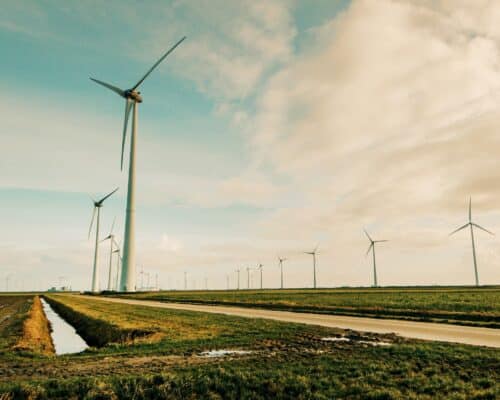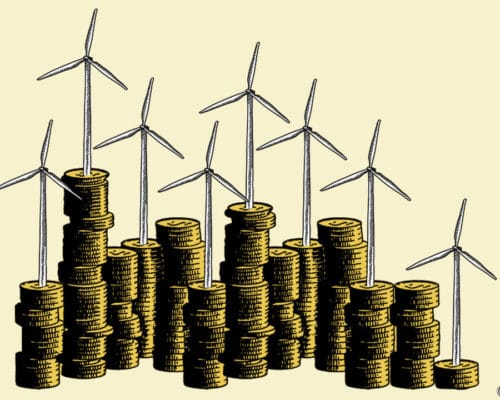The Renewable Energy Potential of Bangladesh
08 July 2021 – by Viktor Tachev Comments (0)
Bangladesh is a country that, without any fanfare, had managed to overcome a past filled with challenges. From a region with extreme poverty and mass starvation in 1974, today, Bangladesh is a symbol of economic progress. As a result, it is witnessing rapid energy demand growth. To adequately address it, the aspiring country is ready to capitalize on the huge renewable energy opportunities it faces. This promises to be a worthy chapter in its remarkable history and sustainable future.
The Renewable Energy Technologies of Bangladesh
In 2008, the Ministry of Power, Energy, and Mineral Resources of Bangladesh published renewable energy policy guidelines. The goal was to put the country on the clean energy map.
At the end of 2018, the installed renewable power capacity in Bangladesh was just 579 MW. The majority was attributed to solar PV and small-scale hydropower. At present, the figure is slightly higher, standing at 649 MW.
Renewable Energy Resources in Bangladesh and Energy Access
The country has a target of having renewables responsible for 10% of the total electricity production by the end of 2021. The goal remains unrealistic, considering that, today, their share is slightly below 3%.
However, there also are some signs that clean energy sustainable development is slowly starting to pick up the pace. Renewable energy resources are being utilizes more intelligently.
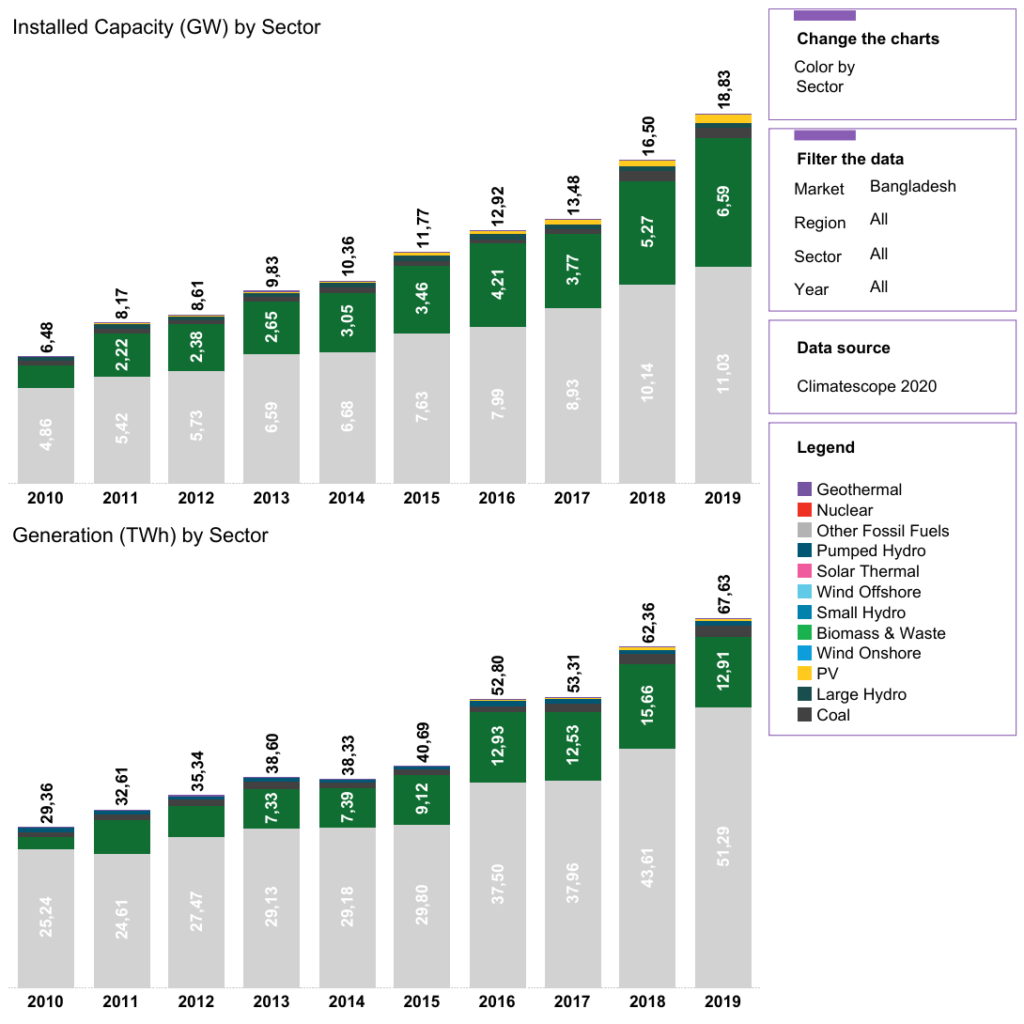
The Renewable Energy Potential of Bangladesh
While the progress has been slow so far, the country has vast unexplored potential. Global Climatescope ranks it in the 33rd position globally in terms of opportunities for renewable energy development. According to the World Bank, Bangladesh has the largest off-grid solar power program globally. It provides electricity and energy access to over 20 million people.
Experts project that if the country utilizes just 1% of the Kaptai dam’s water surface to install floating solar systems, it will ensure nearly 500 MW of solar capacity. Besides, unexplored potential is also lying in the river banks and islands like the Meghna estuary.
Renewable Energy Technologies Available
Industrial rooftop installation of solar panels has the potential to drive 5 GW of additional capacity. Furthermore, SREDA has outlined that Bangladesh can deploy 30 GW of solar power (12 GW of which from rooftop installations) by 2041. This is only one of the renewable energy technologies available to Bangladesh.
The National Renewable Energy Laboratory (NREL) adds that over 20,000 km2 of land has wind speeds between 5.75 and 7.75 m/s with the potential to generate over 30,000 MW.
A report investigating the renewable energy technical capacity of Bangladesh found that the country could deploy up to 156 GW of utility-scale solar on 6,250 km2 of land and 150 GW of wind. Offshore wind power would account for 134 GW of this total capacity.
Investments in Renewable Energy in Bangladesh
Investments in renewable energy in Bangladesh are already starting to increase, especially when it comes to solar projects.

The major share of renewables financing comes from domestic lenders. In return, they are rewarded with access to credit lines from the World Bank and the International Finance Corporation.
However, foreign investments are also on the rise.
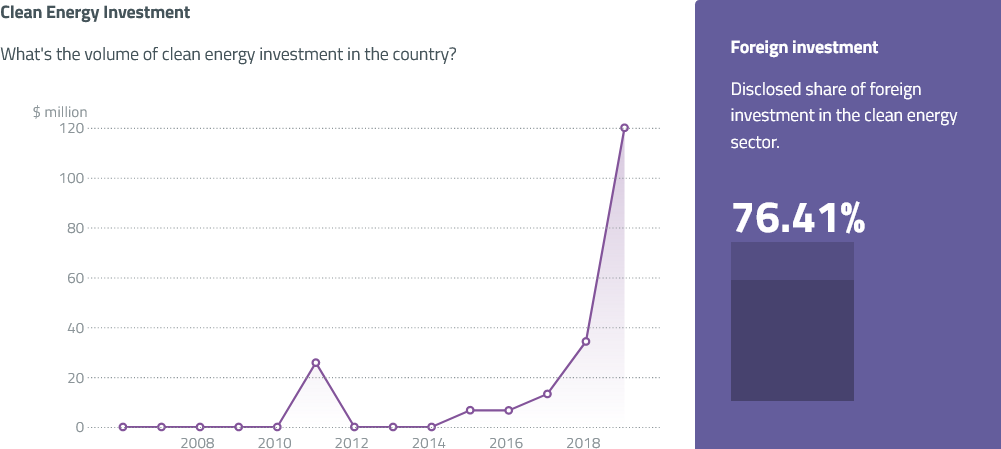
Chinese and US investors show the most considerable interest in Bangladesh’s renewable energy sector. In 2020 Chinese state-owned company National Machinery Import and Export Corporation announced that it will invest US $500 million in building 450 MW of solar and 50 MW of wind capacity in Bangladesh. This will be done in a joint venture with the North West Power Generation Company of Bangladesh.
Besides, Bangladesh also recently approved a 55 MW wind farm. It would be developed by a consortium of China’s Envision Energy and Bangladesh’s SQ Trading and Engineering.
The Government and Renewable Energy in Bangladesh
Although for years, the government had been criticized for providing little support for identifying suitable sites for renewable energy projects. Today this is no longer the case. It is now pushing to establish a domestic solar manufacturing industry and also leads and invests in the sustainable development of new projects for energy access, including a 100 MW solar park.
Financing Within the Renewable Energy Sector
Renewable energy development projects in the country have long been enjoying the support of the World Bank to scale up various clean energy initiatives. These include solar irrigation, solar mini-grids, roof-top solar, solar farms, and other projects. To date, the financing the World Bank has provided to two consecutive Rural Electrification and Renewable Energy Development (RERED) projects stands at US $726 million.
Looking Ahead
A study by the World Future Council concludes that if Bangladesh capitalizes on its renewable energy potential, it will benefit on several fronts. These include having access to sufficient energy for all at the lowest possible costs, addressing economic expansion and reliable energy challenges access.
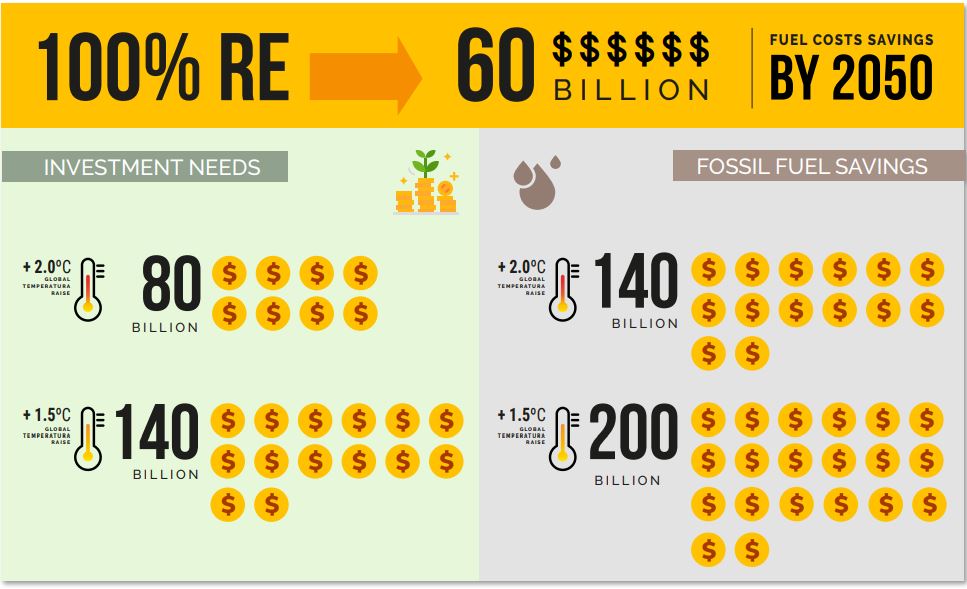
Future Renewable Energy Projects
The only challenge that remains is ensuring the needed capital to realize the renewable energy transition. According to experts, renewable energy in Bangladesh needs US $70b in power investment by 2035 to achieve its renewable energy goals. Furthermore, the International Finance Corporation estimates that the country could attract private investments of US $17b by 2030.
For those willing to invest and cover the rest, renewable energy in Bangladesh promises a generous return.
![]()
by Viktor Tachev
Viktor has years of experience in financial markets and energy finance, working as a marketing consultant and content creator for leading institutions, NGOs, and tech startups. He is a regular contributor to knowledge hubs and magazines, tackling the latest trends in sustainability and green energy.
Read more